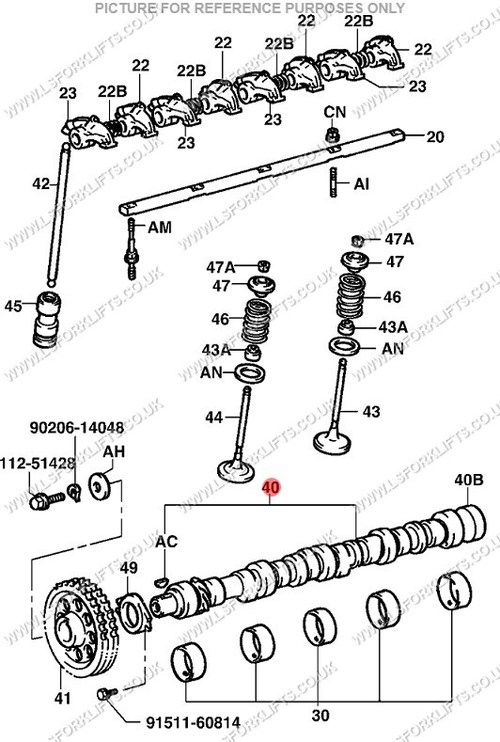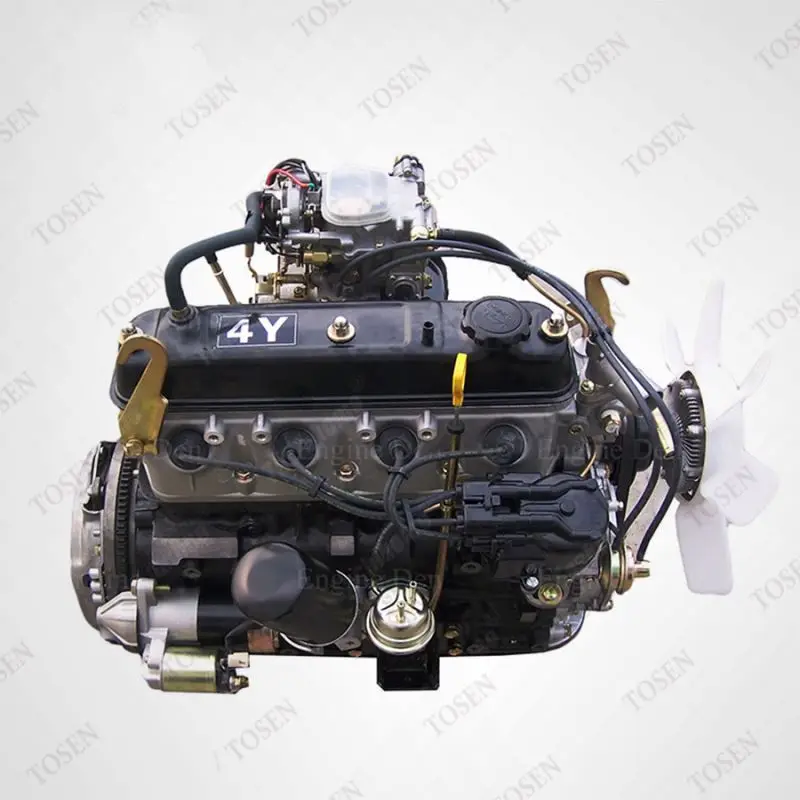How the 4Y Engine Compares to Other Engines in Terms of Fuel Efficiency
Why the Engine Is the very best Selection for Efficiency and Efficiency in Your Auto
The engine stays a crucial component in auto layout, largely as a result of its considerable impact on both performance and efficiency. As innovations in modern technology make it possible for smaller sized engines to provide amazing power while optimizing fuel economy, the assimilation of features such as turbocharging and hybrid systems becomes progressively essential. These advancements not just improve driving experience yet likewise address environmental issues. Nonetheless, the question develops: exactly how do these elements integrate to redefine our understanding of vehicle performance? Discovering this balance exposes deeper understandings right into the future of engine design.
Understanding Engine Types
Understanding the various kinds of engines is important for maximizing efficiency and effectiveness in vehicle layout. The key engine kinds consist of internal combustion engines (ICE), electric engines, and hybrid systems, each offering distinctive advantages and constraints.
Inner combustion engines, which can be more classified into gas and diesel variants, count on the burning of gas to produce power. Fuel engines normally provide higher RPMs and far better acceleration, while diesel engines are known for their torque and fuel performance, making them perfect for sturdy applications.
Electric engines, on the various other hand, use electric motors powered by batteries or gas cells. They supply rapid torque delivery, resulting in smooth acceleration and reduced discharges. The performance of electric engines is significantly greater than that of ICEs, making them a preferred choice for eco-conscious customers.
Hybrid systems combine both internal combustion and electrical engines, leveraging the staminas of both innovations. They enhance gas intake by utilizing electrical power at reduced rates and switching over to gas or diesel for higher rates or heavier tons.
Selecting the ideal engine type is vital for accomplishing preferred efficiency metrics and ecological sustainability in contemporary auto design.
The Effect of Engine Size
Engine size frequently plays an essential duty in figuring out a car's performance and performance. Normally measured in liters or cubic centimeters, engine size straight affects the power output and torque features of a car. Bigger engines generally generate even more horse power, allowing higher velocity and higher full throttle. This is particularly helpful in applications needing durable efficiency, such as sporting activities cars and heavy-duty trucks.
Nonetheless, enhanced engine size commonly correlates with reduced gas performance. Larger engines take in even more gas, causing higher discharges and operational expenses. Makers should balance the demand for power with the requirement for fuel economy. Smaller engines can deliver appropriate performance for daily driving while promoting better efficiency, making them a prominent option in mid-size and small automobiles.
Additionally, advancements in engine design, such as turbocharging and straight fuel injection, enable smaller engines to attain power degrees equivalent to their larger equivalents. This trend highlights the importance of not only focusing on engine size yet additionally considering general vehicle design and technology (4y engine). Ultimately, the influence of engine dimension on performance and effectiveness highlights the requirement for customers to examine their certain driving needs and choices when picking visit this page a vehicle
Advanced Engine Technologies
Advancements in engine innovations have substantially reshaped the landscape of automotive performance and effectiveness, building upon the foundational ideas developed by engine size. Especially, innovations such as turbocharging and direct fuel injection have made it possible for smaller engines to provide power levels previously linked with bigger counterparts. Turbochargers press air going into the engine, enabling for boosted power result without a matching boost in engine size, while direct shot maximizes fuel distribution, improving burning effectiveness.
Additionally, variable valve timing systems have actually become a crucial modern technology, permitting engines to adjust valve procedure based on driving conditions. This flexibility boosts both efficiency during velocity and gas performance throughout cruising. Crossbreed and electrical engine modern technologies additionally highlight the shift in auto style, incorporating typical inner burning engines with electric motors to maximize efficiency while lowering emissions.
In addition, improvements in materials science have actually brought about lighter, a lot more sturdy engine components, even more improving efficiency and long life. The assimilation of advanced electronics and engine control units also permits real-time modifications, making sure optimum efficiency across various conditions. Collectively, these advanced engine innovations not only boost vehicle performance but also contribute to a more lasting automobile future, demonstrating the ongoing evolution of engine design.
Harmonizing Power and Performance
Striking an equilibrium between power and efficiency is crucial in contemporary auto style as suppliers look for to meet increasingly stringent emissions guidelines while pleasing customer demand for performance (4y engine). The obstacle hinges on maximizing engine qualities to supply robust power output without compromising fuel economic situation
To attain this balance, designers employ numerous techniques, such as turbocharging, which improves engine power forcibly in more air, allowing for a smaller sized engine displacement that boosts fuel performance. Variable valve timing innovations likewise play a considerable role, making it possible for engines to readjust their efficiency characteristics based upon driving problems, thus enhancing both power and effectiveness.
Moreover, improvements in materials and producing strategies have actually led to lighter engine components, which decrease overall vehicle weight and enhance gas performance without endangering power. Hybrid technologies have actually likewise become a viable option, integrating conventional internal combustion engines with electric powertrains to give More Bonuses an increase in efficiency while maintaining lower emissions.

Future Patterns in Engine Design

In addition, the growth of innovative products, such as high-strength alloys and lightweight compounds, is readied to transform engine parts. These products not only minimize weight yet likewise improve thermal effectiveness, therefore enhancing performance. Additionally, makers are checking out variable compression ratios, allowing engines to adapt to various driving problems, enhancing both power output and fuel economic climate.
Additionally, the surge of expert system and artificial intelligence in engine layout is enabling predictive upkeep and real-time performance optimization. This innovation can bring about engines that self-adjust for maximum performance based upon driving patterns.

Final Thought
In final thought, the engine offers as a crucial part in attaining optimum efficiency and performance in modern-day lorries. The interaction between engine size and layout continues to develop, driving innovations that balance electrifying performance with environmental sustainability.
Additionally, advancements in engine layout, such as turbocharging and direct fuel shot, allow smaller sized engines to accomplish power levels similar to their larger equivalents.Technologies in engine modern technologies have actually considerably reshaped the landscape of auto performance and efficiency, building upon the fundamental ideas established by engine size. Turbochargers compress air going into the engine, permitting for increased power result without a matching increase in engine dimension, while direct injection optimizes fuel delivery, improving burning performance.
Hybrid and electrical engine technologies better show the shift in vehicle design, incorporating traditional inner combustion engines with electric motors to make the most of effectiveness while lowering exhausts.
Jointly, these sophisticated engine modern technologies not only enhance automobile performance however additionally contribute to a much more sustainable auto future, showing the recurring development of engine style. (4y engine)